
views
Keeping Hair Clean and Trimmed
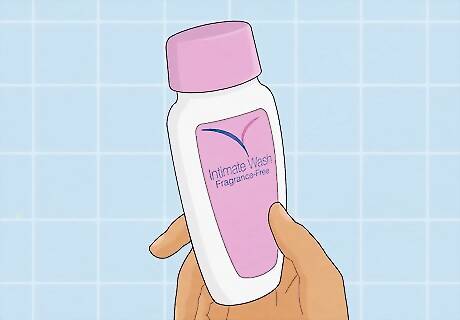
Wash hair with a gentle soap. It's not just the hair on your head that needs washing -- your pubic hair needs a little love and attention too. Every time you take a shower or bath, use a gentle, fragrance-free soap to wash the pubic hair. Be gentle -- pulling the hair down there can hurt! Your regular shampoo or body wash is too harsh to use on the sensitive skin down south, so don't put it anywhere near your pubic region. Use an uncolored, non-fragrant bar of soap reserved specifically for that area. Don't rub it directly on the pubic hair - lather it up on your hands first. Also be very careful to avoid getting soap on or inside genitals, as it can cause irritation and itchiness. This is especially important for women, as even the gentlest soap can upset the PH balance of the vagina, leading to inflammation or infection.

Keep hair trimmed short. Even if hair removal isn't your style, you'll probably want to keep your pubic hair looking neat. The best way to do this is to give yourself a haircut! The best instrument to use is a small nail scissors, preferably one with blunted ends. This will allow you the greatest maneuverability and least chance of cutting yourself. Just be sure to set it aside, somewhere private, for pubic hair use only. Don't use large scissors, as these can be awkward (and therefore more dangerous) to use. You can use an ear or nose hair trimmers in a pinch, but make sure it has a guard you can place over the blades to protect yourself. Never use an electric razor with rotating heads, as these are painful to use in the pubic region. To trim the pubic hair, pull the hair away from the body and slowly and carefully snip it away, as close to the skin as you feel comfortable with. If you prefer, run a comb through the hair first, then snip the hair protruding through the fingers of the comb. You will have to rely on feel for most of the trimming process, though you should visually check your progress with a hand-held mirror at regular intervals. Make sure that you clean up any fallen hair after you're done trimming, as leaving pubic hairs lying around the bathroom (especially a shared one) is a major faux pas. If possible, do your trimming over the toilet bowl, that way you can easily flush away any fallen hairs when you're done. Many think trimming is the best way to do it.
Removing Hair
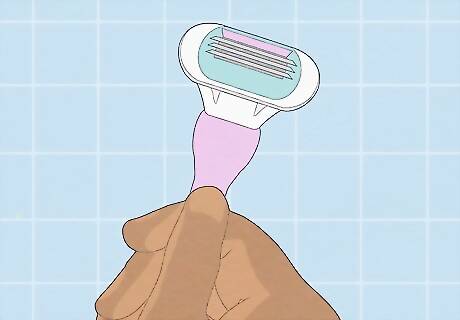
Shave the hair. Shaving is probably the most common option when it comes to pubic hair removal, as it is cheap, easy, relatively painless, and embarrassment free. You will need some gentle, unfragranced shaving cream or gel (both men and women should use a women's shaving cream, as it is the gentlest), preferably one designed specifically for removing pubic hair, and a new razor (dull blades will be less effective and can cause irritation). First, trim the hair from the areas you intend to shave -- you can choose to just remove the hair around the bikini or brief line, or you can go the whole hog and remove it all. Razors work best and cause the least pulling and irritation on short hair, so aim to trim the hair to about ⁄4 inch (0.6 cm) in length. Soften the hair using hot water in the bath or shower for 3 to 5 minutes before you shave. Alternatively, you can apply a warm compress to the area to achieve the same effect. Apply your chosen shaving cream to the area, taking care to avoid the genitals. It may be wise to test the shaving cream on a small patch of skin 24 hours before shaving, as some creams may cause an allergic reaction. Pull the skin around your pubic area taut using your free hand -- shaving works best on flat surfaces. Begin shaving, without applying any pressure to the razor (if you need to apply pressure, your razor is too dull). Shaving upwards (against the direction of hair growth) will give you the closest, smoothest shave, while shaving downwards (with the hair growth) will minimize irritation for people with sensitive skin and reduce the risk of developing ingrown hairs. Once you've removed the desired amount of hair, wash the area thoroughly with warm water to remove any cream, pat the area dry with a clean towel, then apply a soothing lotion to reduce irritation.
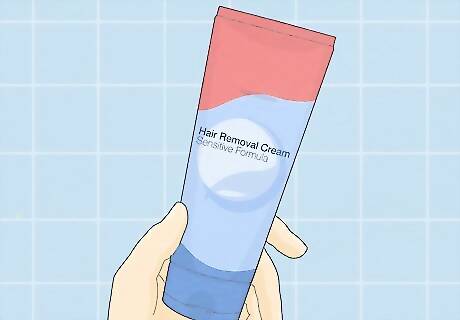
Try a depilatory cream. Depilatory creams are a good option for people who just want to tidy up their bikini or brief line, with as little pain as possible. These hair removal creams work by using strong chemicals which actually dissolve the hair so it can easily be wiped away. As these chemicals are very harsh (as evidenced by their strong smell) it is not recommended that you use depilatory creams to remove all of your pubic hair, as they can be very irritating on the skin and have even been reported to cause chemical burns. They should only be used to remove excess hair outside the bikini or brief line. Before using a depilatory cream, you should trim the hair you wish to remove. This will cut down on the amount of product put on an old pair of underwear which you don't mind getting cream on. Use the underwear as a guideline for where to spread the cream -- this will ensure that none of the cream gets on any delicate areas. Leave the cream on the bikini or brief line for the amount of time indicated on the label. Never leave the cream on for longer than stated on the product instructions, as this can be very harmful to the skin. Once the time is up, wipe off or wash away the cream, as directed. Any unwanted hair will come away with the cream.
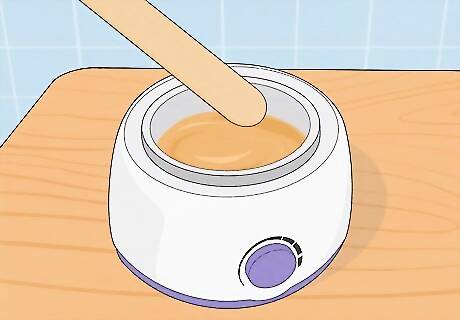
Get a wax. Waxing is a very effective form of hair removal, with results lasting between 2 to 4 weeks. There are many styles of waxing available: you can just have unwanted hair around the bikini line removed, go for an extended bikini wax or landing strip, or get everything removed with a Brazilian wax. The same applies for men as women, though using wax to removing hair from the sensitive skin on the testicles is not recommended. Waxing is performed by applying a hot, stick wax onto the areas of hair your wish to remove. A strip of cloth is placed over the wax and then pulled away, taking both the wax and the hair with it. As the hair is pulled from the root, it takes much longer to grow back than with other forms of hair removal, such as shaving, which only remove the hair above the skin. However, waxing can be pricey, so despite the longer time between hair removal, it can be an expensive option to maintain. Although home waxing kits are available, if you have never used wax before it is recommended that you go to a professional salon to have pubic hair removed. Be aware that waxing can be painful, especially in such a sensitive area, though over time hair growth between waxes will diminish and pain should lessen slightly.
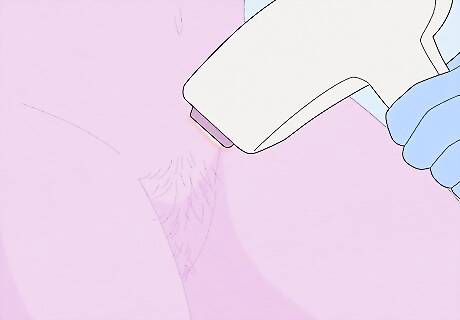
Think about electrolysis or laser hair removal. Electrolysis and laser hair removal are two treatments available which can permanently remove or reduce pubic hair. Electrolysis is the only method which will completely remove pubic hair for good. It works by passing an electric current through the hair follicle, which fries the root of the hair and prevents it from growing back. You will only need one treatment (though it may last anywhere from 2 to 12 hours, depending on the amount of hair) and you will never need to worry about the hair down there again! However, it is important to know that electrolysis can be quite painful (though not as painful as waxing) and is expensive. Laser hair removal is a newer form of hair removal, which guarantees permanent hair reduction. It works by targeting the pigmented hair follicles with a pulsing light, thereby stunting hair growth. It is relatively painless, and the treatment only takes a couple of minutes, though several treatments will be required. Although laser hair removal is an effective hair reduction treatment, it is not guaranteed to remove all hair and other hair removal methods will still need to be employed. As it works by targeting dark pigments in the hair, it is not effective for treating light-colored hair. Laser hair removal treatments are also expensive.
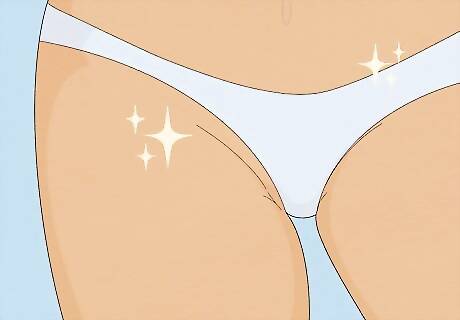
Consider going au naturel. It is important to understand that the decision to remove pubic hair is a personal one. So although it is becoming increasingly popular nowadays to go bare "down there", you should not feel pressured into waxing it all off if that is not something you feel comfortable with. As long as that area is kept clean and neat, there are no major hygienic reasons to remove pubic hair. Most people just choose to remove it for aesthetic reasons. It is important to be aware that there are many men and women who still choose to go the natural route, and let their pubic hair grow freely. So whatever option you choose, understand that it's perfectly normal!
Dealing With Other Issues

Soothe irritation. Irritation is just part and parcel of the hair removal process, and no matter what method you choose, you're bound to end up with some irritation, as least at first. To minimize those annoying red bumps as much as possible, you can: Exfoliate the area with a gentle sugar scrub. This gets rid of dead skin cells and allows the skin to breathe. If you don't have any sugar scrub handy, make a simple paste from baking soda and water, which will also do the trick. Moisturize the area with a gentle, non-fragranced lotion. Baby lotions and oils, along with any moisturizers containing aloe vera, are popular options which will soothe and calm the skin. Wear loose, breathable clothing. Skin needs air in order to heal, so wearing tight leather pants directly after a bikini wax or shave job is not such a good idea. Try wearing cotton underwear and skirts or loose trousers for the day or two following hair removal.

Deal with ingrown hairs. Ingrown hairs can be painful and can even lead to infection if left to their own devices. They commonly appear during the regrowth phase after shaving or waxing, If you have developed an ingrown hair in your pubic region, your can remove it as follows: Take a hot shower or bath to soften the skin around the hair and open the pores. Pat the area dry with a clean towel, then take a sterilized tweezers and, applying pressure on either side of the hair, pull out the hair. Dab a little topical astringent on the area, allow it to dry, then put on a breathable pair of cotton underwear. Continue applying the astringent over the next couple of days, until the area heals.

Dye pubic hair. If you've prematurely developed grey hairs in the pubic region, don't fret. Although not medically recommended, it is possible to dye your pubic hair at home using a store bought hair color. However, it is very important that you follow the proper safety precautions to ensure that you don't get any color in any sensitive genital regions. Go for a color that's as close to your natural pubic hair color as possible. Pubic hair is usually a shade darker than head hair, so if you use hair color regularly, you may need to go a color darker than usual. Root touch up kits are ideal for dyeing pubic hair, as they provide just enough color and include a small brush for careful application. Before dyeing, do a patch test to ensure that you won't develop an allergic reaction to the color. Then apply petroleum jelly to all of the sensitive parts of the genitals where you don't want the color to go. Carefully apply the hair color, as directed on the packaging, and leave the color to develop for the minimum amount of time necessary. Wash the color away gently but thoroughly using warm water, then use a sponge or washcloth to remove the petroleum jelly.











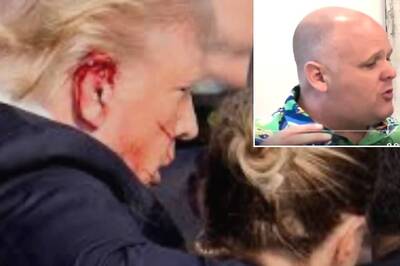







Comments
0 comment